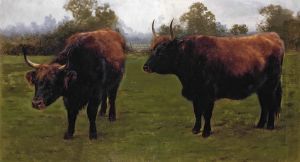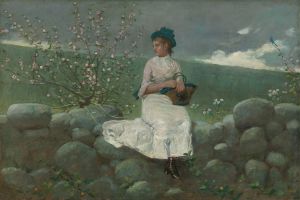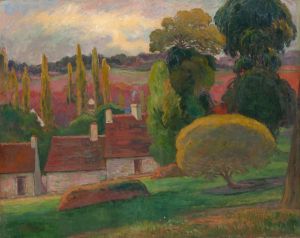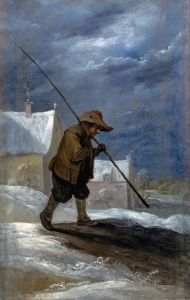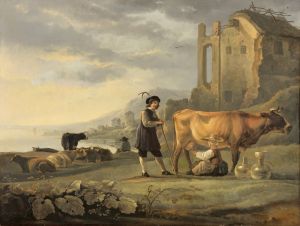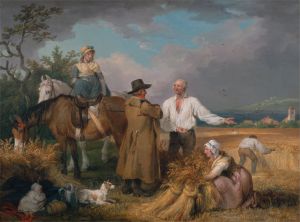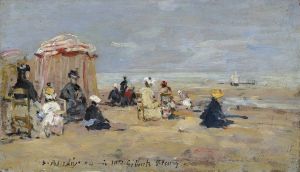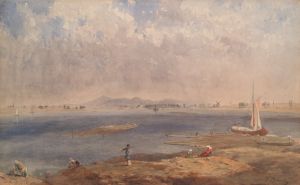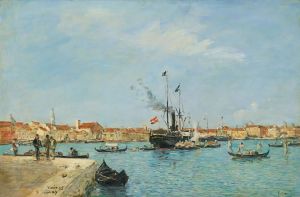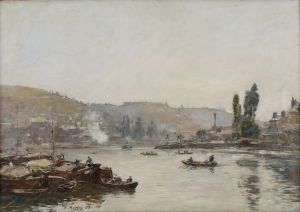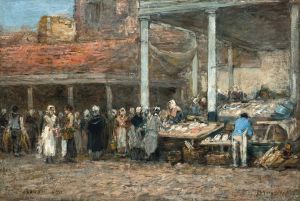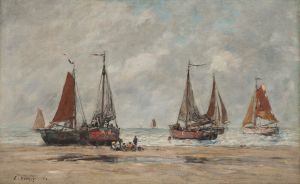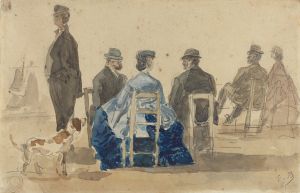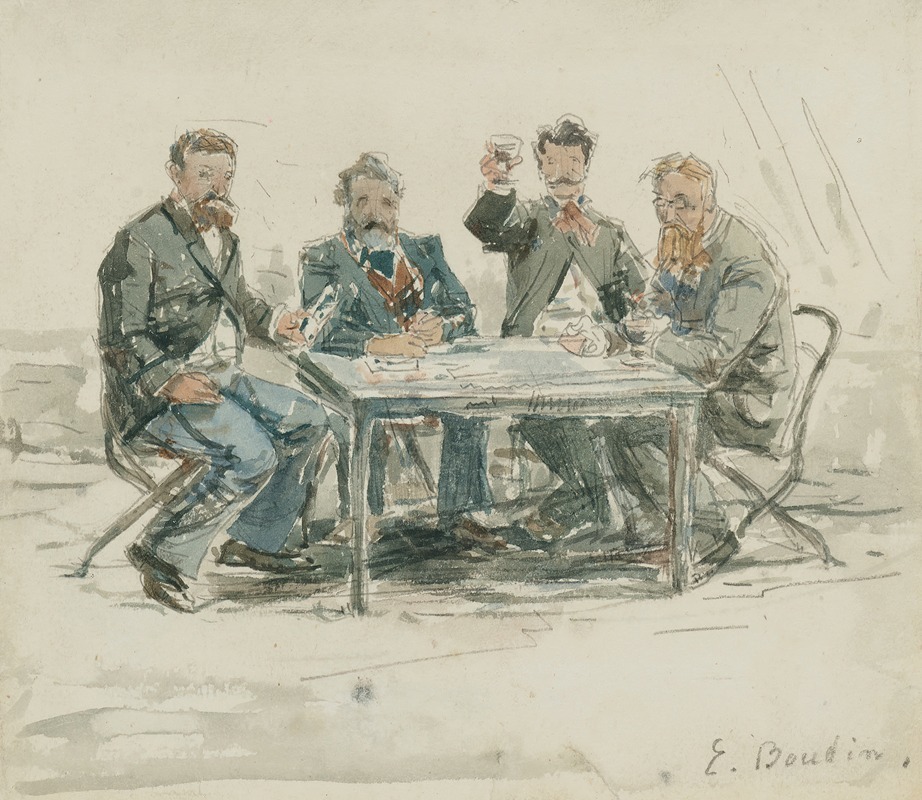
À la ferme Saint-Siméon
A hand-painted replica of Eugène Boudin’s masterpiece À la ferme Saint-Siméon, meticulously crafted by professional artists to capture the true essence of the original. Each piece is created with museum-quality canvas and rare mineral pigments, carefully painted by experienced artists with delicate brushstrokes and rich, layered colors to perfectly recreate the texture of the original artwork. Unlike machine-printed reproductions, this hand-painted version brings the painting to life, infused with the artist’s emotions and skill in every stroke. Whether for personal collection or home decoration, it instantly elevates the artistic atmosphere of any space.
À la ferme Saint-Siméon is a painting by the French artist Eugène Boudin, who is renowned for his landscape paintings and as a precursor to the Impressionist movement. Boudin was born on July 12, 1824, in Honfleur, a picturesque port town in Normandy, France. His early exposure to the sea and the coastal environment significantly influenced his artistic style and choice of subjects.
The painting, À la ferme Saint-Siméon, depicts the rural and pastoral setting of the Saint-Siméon farm, which was located near Honfleur. This farm was not only a working farm but also a popular gathering place for artists during the mid-19th century. It served as an informal artists' colony where painters could find inspiration in the natural beauty of the Normandy landscape. The farm's proprietor, Madame Toutain, was known for her hospitality, and the location became a hub for artists seeking to capture the essence of the countryside.
Boudin's work is characterized by his ability to capture the transient effects of light and atmosphere, a skill that would later influence the Impressionists. In À la ferme Saint-Siméon, Boudin employs his signature technique of painting en plein air, or painting outdoors, to capture the scene with immediacy and authenticity. This approach allowed him to observe and depict the changing light and weather conditions directly, lending his work a sense of realism and vitality.
The painting itself showcases Boudin's adept use of color and brushwork. He often used a light palette to convey the luminosity of the sky and the subtle variations in the landscape. In this work, Boudin captures the serene and idyllic nature of rural life, with a focus on the interplay between light and shadow. The composition typically includes elements such as farm buildings, trees, and open fields, all rendered with a delicate touch that emphasizes the tranquility of the scene.
Boudin's influence on the Impressionist movement is significant. He was a mentor to Claude Monet, one of the most prominent figures in Impressionism. Monet himself acknowledged Boudin's impact on his development as an artist, particularly in terms of embracing plein air painting and focusing on the effects of light. Boudin's dedication to capturing the natural world with immediacy and sensitivity laid the groundwork for the Impressionists' exploration of similar themes.
Throughout his career, Boudin remained committed to depicting the landscapes and seascapes of Normandy and Brittany. His works are celebrated for their atmospheric quality and their ability to evoke the mood of a particular moment in time. À la ferme Saint-Siméon is a testament to Boudin's skill in portraying the beauty of the French countryside and his role as a pioneer in the evolution of modern landscape painting.
Today, Boudin's paintings, including À la ferme Saint-Siméon, are held in high regard and can be found in major art museums and collections around the world. His contribution to the development of landscape painting and his influence on subsequent generations of artists continue to be recognized and appreciated by art historians and enthusiasts alike.






